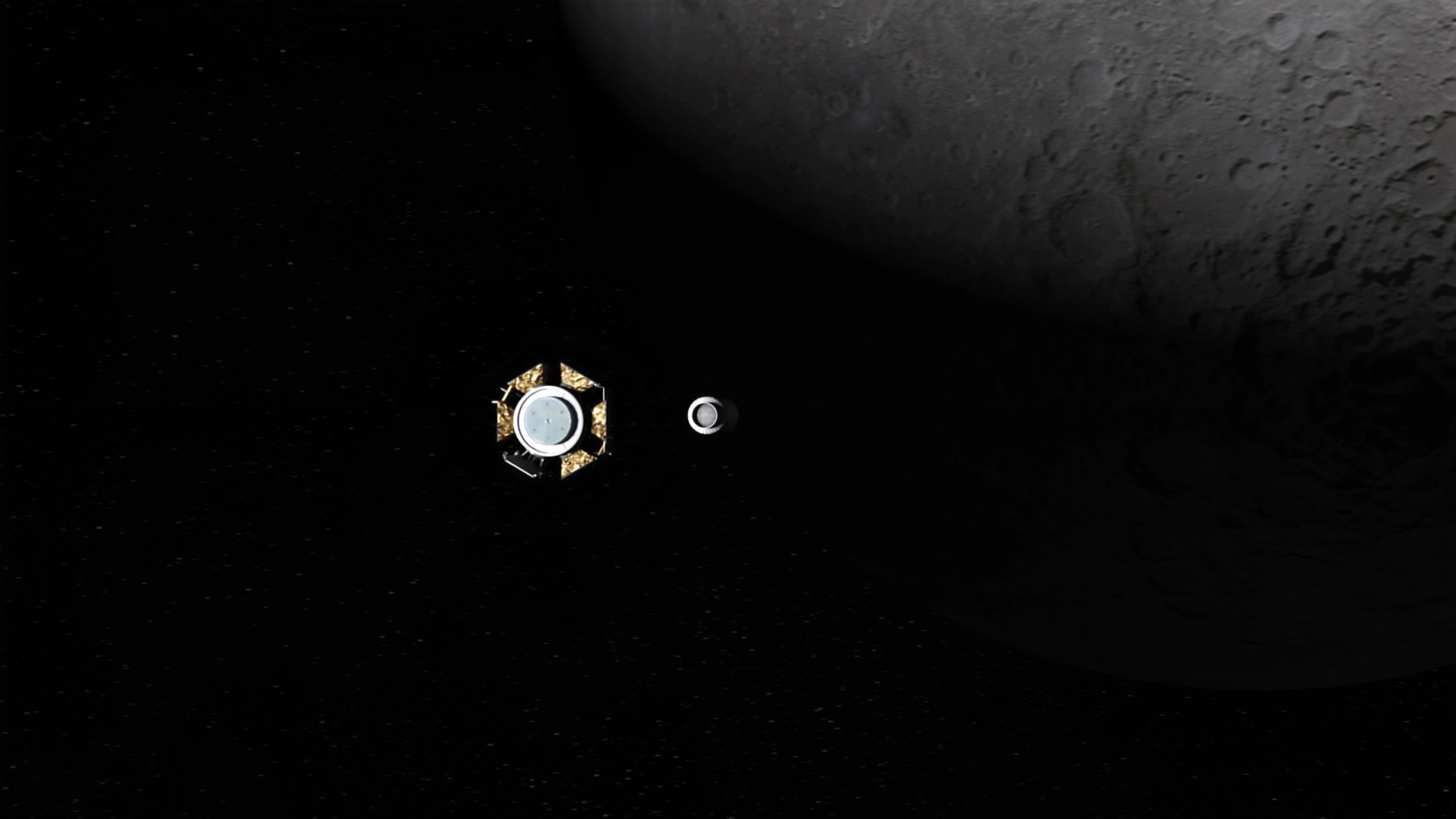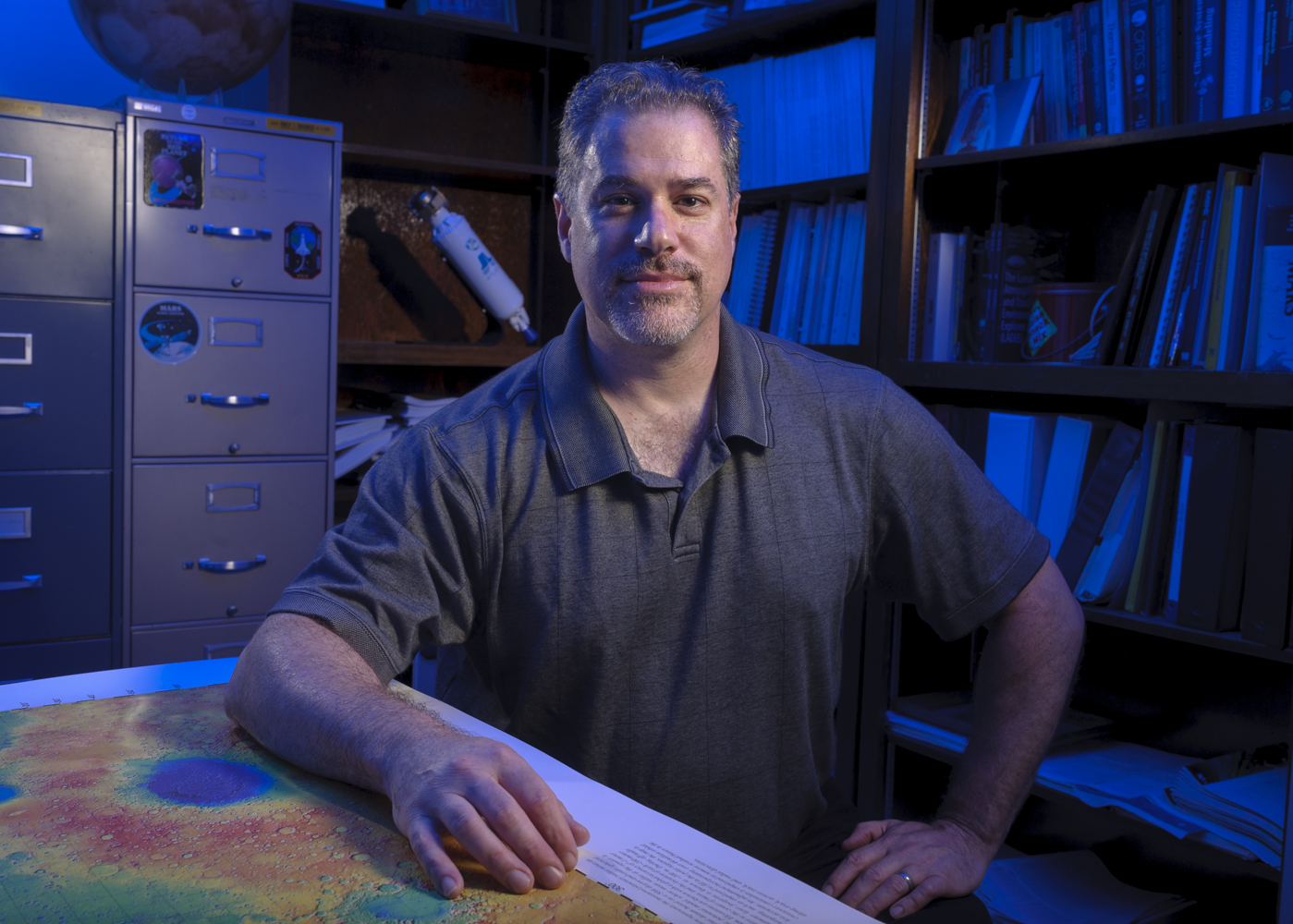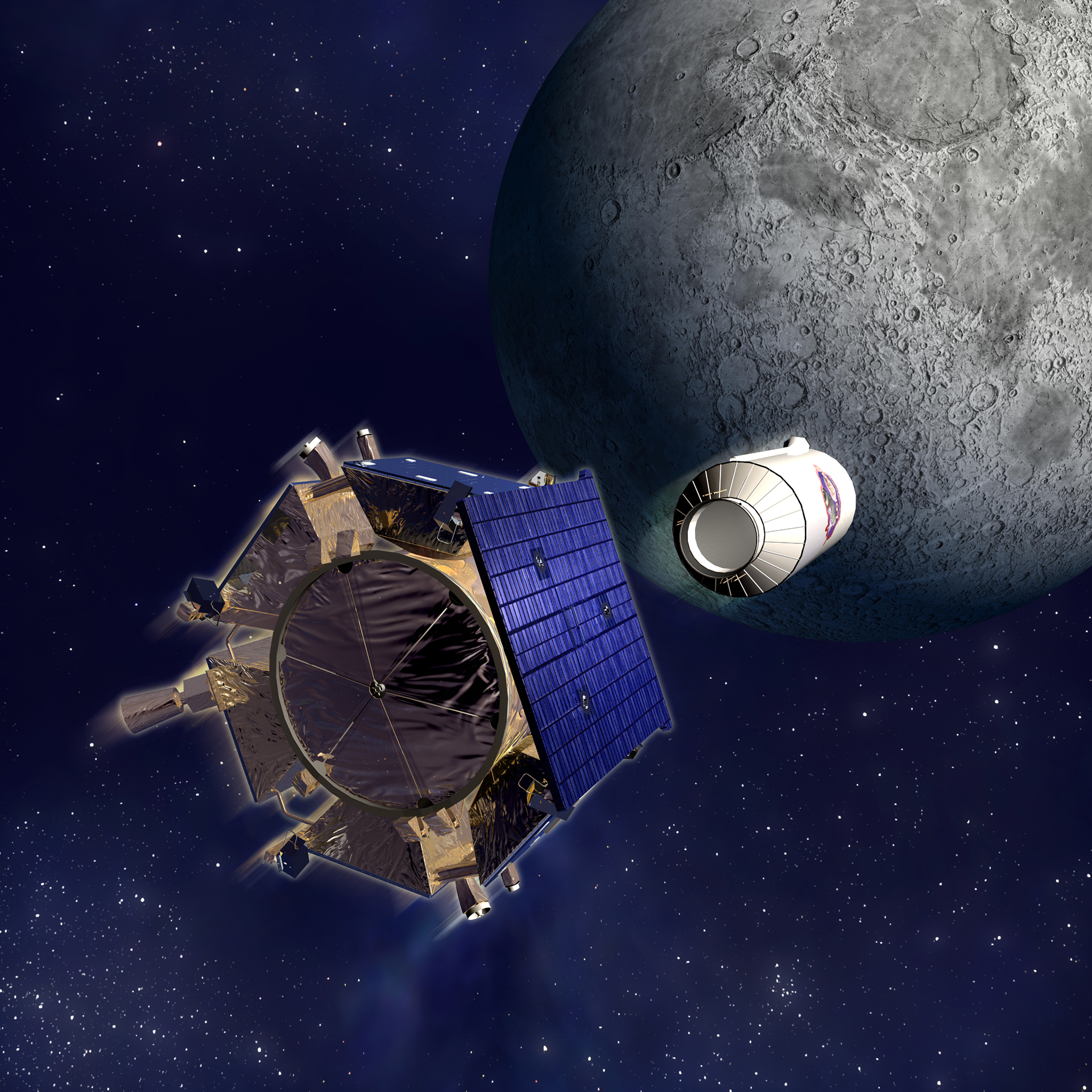A rocket’s empty fuel tank smashed into the surface of the Moon 10 years ago on Oct. 9. Meanwhile, back on Earth, Tony Colaprete was holding his breath: Would it work? As their spacecraft followed behind, would his team’s instruments detect water in the lunar soil thrown up by the impact?
Using essentially a piece of garbage to do truly groundbreaking science was the brilliant hack behind NASA’s LCROSS mission, the Lunar Crater Observation and Sensing Satellite. And, boy, did it work. LCROSS reached out and touched that Moon material and confirmed it held a considerable amount of water ice. Colaprete, who was the mission’s principal investigator, now is leading the science behind NASA’s latest lunar mission – the Volatiles Investigating Polar Exploration Rover, or VIPER. In this Q&A, Colaprete looks back on the clever solutions that defined LCROSS and the drama of that impact night. And he explains what all that potential water resource means for NASA’s Artemis program today.

Tony, can I introduce you as “that guy who smashed stuff into the Moon for science”?
TC: Haha, yeah, sure. I’m a fan of crashing things into planetary bodies.
Ok, cool. So, you were a big part of the LCROSS mission, which used an ingenious hack, I want to call it, to learn something huge about the Moon. Is that a fair description?
TC: Oh, yeah. It was very untraditional in many ways. A hack is a good way to describe it, because we had to repurpose a lot of things in ways they were never intended to be used. The best one was the empty fuel tank from the Centaur rocket that launched LCROSS. It let us “game the system,” if you will. The original call for a new mission said, “We have more than 2,000 pounds of extra space on this launch to the Moon. How would you use it?” We knew we wanted to have something impact the Moon – to get that lunar material thrown up in the sunlight so we could study it – but instead of using up that mass on the thing that would impact, we said let’s just bring the Centaur along for that purpose. And then we got to use all the allotted weight to build an awesome spacecraft, instead. It allowed us to target our impact precisely and then swoop in right after it to “taste” everything it threw up in the air.
Nobody had ever used a spent upper stage of a rocket like that. Normally, it just burns up in the atmosphere.
How did people react to the idea? Was it seen as a little off the wall??
TC: No! When we gave our “sales pitch” at NASA Headquarters, people got it! They were excited! Sending an impactor into the Moon wasn’t a new idea, itself. We did that during Apollo, too, to create moonquakes to study.
But what made our proposal unique was that our instruments would fly so close to the plume of debris, instead of watching from a satellite in orbit. We’d actually reach out and touch the water – excavate it with the impact and then fly right through with the spacecraft’s instruments.
We walked out of that presentation feeling really good.
I bet you did! So, then, you won – Yay! – and it was time to get to work. What were some of the other hacks you came up with along the way?
TC: Well, after we made a number of changes to the science instruments we wanted to include, we only had nine months left to build the LCROSS payload. So, we looked at the catalogs of commercial instrument providers. They were mostly small companies who were eager to participate and make their instruments something that could fly to space. We worked with one company that made instruments for carpet recyclers, for example.

What?! Why?
TC: They use instruments like ours to identify the chemical makeup of carpets so they know how to recycle them! The same thing is used on construction sites to find asbestos in walls before work begins. And those need to be rugged, so that was a good starting point for us wanting to send them to space.
We found instruments that we could repurpose from beer production lines and thermal cameras that monitor engine heat in stock car racing.
LCROSS was different from the usual NASA mission, where you’d say, “Here’s what I need. Now, design it from scratch.” These companies were able to adapt their instruments to our needs really fast, and we delivered the payload to the spacecraft on time and under budget.
Impressive. So, then, LCROSS was ready to fly. How did that feel – were you completely confident it would work?
TC: The nature of the LCROSS payload program was: Break it, fix it. Break it, fix it. It was agile, like a lot of commercial teams. That gave us more confidence at launch – we’d already exposed all the weaknesses.
But there were still problems before it launched. During a “random vibration” test, which mimics the shaking of launch, one of our cameras failed. Someone at NASA said, “Well, no choice but to break it open and try to fix it.” But I said, “Wait, it’s still under warranty! Let me check with the company.” And they fixed it, we retested it, and it passed!
That’s amazing! So, let’s go to the night of impact: Oct. 9, 2009. It sounds so exciting from the outside, but how did it feel when you were living it?
TC: We’d practiced a lot – going through the motions of various calls we’d have to make, like when to switch on the instruments and take measurements and such – so that takes the emotion out of it.
But there were some dramatic moments. Like when the fuel tank had hit the surface, and we had just four minutes for the LCROSS spacecraft to fly in behind it, measuring all it could in the plume of debris and sending the data back to Earth before it hit the surface itself. With one minute to go, we wanted to change the setting on one camera to a longer exposure, to see the bottom of the crater we were flying into.
Our instrument scientist, Kimberly Ennico Smith, kept calling out for the NIR, or near-infrared, camera to be adjusted, and the team controlling the instruments kept saying, “Copy. MIR…”, referring to the mid-infrared camera – the wrong one! They went back and forth like this, with one minute remaining in the mission, until Kimberly finally shouted, “NIR! November! November!” Suddenly, they got it and made the change, and we saw it: the bottom of our new crater, created by the impact, inside this much larger lunar crater.
Aaaah! That’s crazy! That always happens when you’re trying to spell a name over the phone or something. What an ordinary misunderstanding to have at such a critical moment.
TC: Yeah, it was. And soon after that, it was over. Mostly, we were just happy we got the data and were riding that high, because now it was about 5 a.m. I drove home to shower before meeting with the science team at 8 a.m., and the Moon was still up in the sky. I couldn’t help just staring at it as I went.
I can’t even imagine what that felt like! So, then, after you announced to the world that LCROSS had confirmed there was water ice at the Moon’s poles, did people think differently about the Moon and their plans to explore it?
TC: Oh, yeah. When the LCROSS results came out, the entire concept of the Moon and its water inventory changed dramatically. This came on top of several other missions that saw suspected signs of water from orbit, and it was all enough for governments around the world to pivot and put their attention on the Moon.
Also, it sparked a new commercial sector to form around extracting water on the Moon. The identification of water and other potential resources by LCROSS and other missions has motivated companies to develop services to the Moon. NASA is helping that along by providing business to these fledgling commercial services.
So, now it’s been 10 years since the LCROSS announcement of “buckets” of water on the Moon. What are we going to need to know to extract the water LCROSS found and use it?
TC: We need to get to the surface. That’s really important to make significant progress, especially to be able to use the Moon’s resources. We need to make observations at the surface and below ground, down to at least three feet or so. That’s where we believe there’s enough water, over a wide enough area, to be a useful resource.
At Ames, we’re sending two instruments to the Moon that will go on one of the first lunar landers provided by NASA’s commercial partners. It’s scheduled to land in July 2021. So, it will carry our two instruments – the Near-Infrared Volatiles Spectrometer System, or NIRVSS, and the Neutron Spectrometer System, or NSS – to the Moon’s equatorial region. These two are complementary, and together they’ll “sniff out” the water around them and up to three feet underground, and watch how that water cycles throughout the day. This might tell us how the water ends up concentrated at the poles.
This step with the instruments on a lander is important preparation for a rover mission to the poles. We need to go down with a rover, drill for samples, take measurements and then make resource maps – like people have long done on Earth. NIRVSS and NSS are designed for that, to prospect for water. But first, in 2021, we get to test that our design and measurement approaches are good, which reduces the risk for a future rover mission.
LCROSS was a phenomenal success, and now you get to go again and learn more! What are you most excited about learning next about the Moon?
TC: Well, don’t forget, we also had the LADEE mission at Ames – the Lunar Atmosphere and Dust Environment Explorer – so we’re totally spoiled! I love it!
We’re going to the south pole of the Moon with the Artemis program, and it’s an environment that we have never experienced before! I can’t wait to have that view from the surface – immense mountains and craters, these shadows that are literally streaming by you over time, and being able to go into craters that haven’t seen sunlight in two billion years.
I’m excited for that, just exploring. It’s going to be unlike any world we’ve been to before.
That’s amazing to be able to say: The Moon is our closest neighbor, we’ve studied it a lot, and we’ve actually been there – but still there’s a unique world there that we’ve never seen.
TC: Exactly, exactly. That’s what I’m most excited about. And I know we’re going to get phenomenal science.
What I’m actually really excited about, too, is that, looking toward Artemis and a sustained presence for humankind at the Moon, we are making science fiction a reality. This is the initial step to becoming a multi-world species: the Moon and then Mars. We’re actually starting to see that begin! It’s a pretty spectacular time to be doing this.
For news media:
Members of the news media interested in covering this topic should reach out to the NASA Ames newsroom.



























